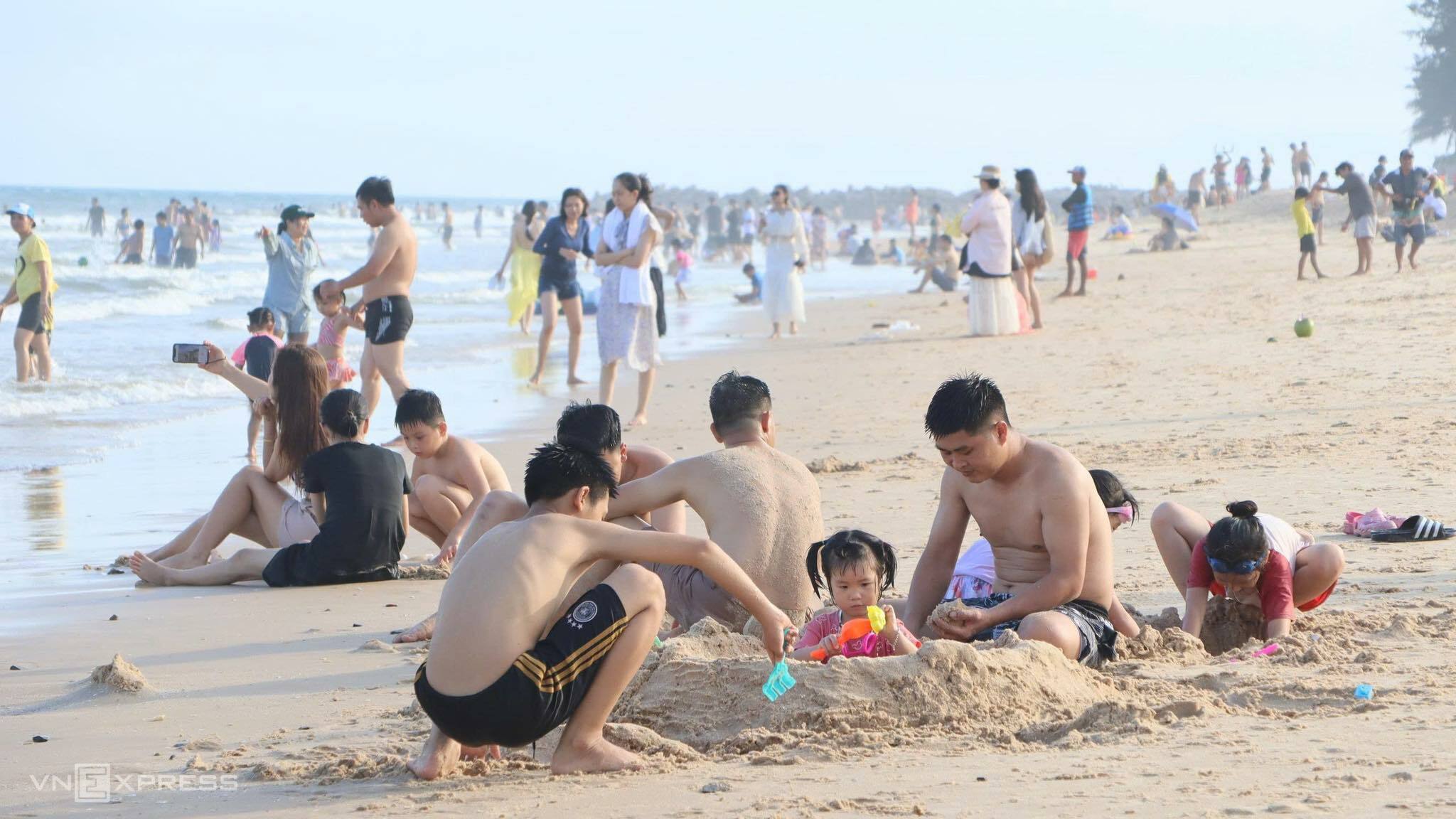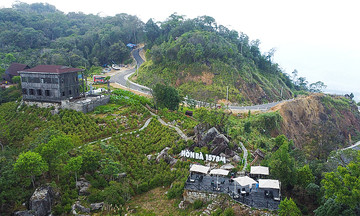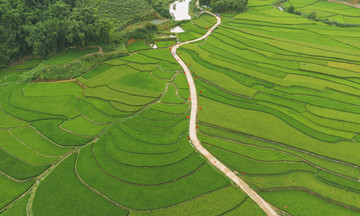At the conference reviewing key tourism tasks for the second half of the year, held on 9/7 in Hanoi, National Tourism Administration director Nguyen Trung Khanh stated the industry has "achieved outstanding results" in the first six months.
Vietnam welcomed 17.6 million international visitors in 2024 and set a target of 22 to 23 million for this year, a 22% to 27% increase compared to the 18 million arrivals in 2019 – Vietnam's tourism golden year.
In the first six months, Vietnam welcomed 10.7 million international visitors, exceeding the 10 million arrivals in all of 2016 and increasing 26% compared to the same period in 2019. In January alone, Vietnamese tourism set a new record by welcoming nearly 2.1 million international visitors, nearly 40% higher than the same period in 2019. By March, Vietnamese tourism set a second record with over 2 million arrivals in a single month.
These achievements are partly due to the government's visa exemptions and relaxations. Citizens of Poland, the Czech Republic, and Switzerland were granted visa exemptions from 1/3 to 31/12 under the 2025 Tourism Stimulus Program. In March, the government further exempted visas for citizens of 12 countries: Germany, France, Italy, Spain, the United Kingdom, Northern Ireland, Russia, Japan, South Korea, Denmark, Sweden, Norway, and Finland.
In addition, many tourism products were refreshed and diversified by travel agencies during the first six months. Tours associated with patriotism and historical sites, especially during the 30/4 holiday, also attracted visitors.
During the same period, several large-scale entertainment and accommodation facilities opened across the country, including Sun World Ha Nam Water Park, VinWonders Vu Yen Hai Phong, Lamori Thanh Hoa Resort, and Radisson Red Da Nang Hotel. This year also marks the first time the tourism industry organized international cruises departing directly from Vietnam.
 |
Tourists at Mui Ne beach in early July. Photo: Viet Quoc |
Tourists at Mui Ne beach in early July. Photo: Viet Quoc
However, Vietnam still faces challenges in achieving its yearly target.
According to director Nguyen Trung Khanh, one challenge comes from regional competition. China and Thailand have continuously implemented visa relaxations and exemptions for potential markets, creating significant competition and impacting the quality and quantity of tourists visiting Vietnam.
Service quality at some locations hasn't met expectations, including a shortage of 4- and 5-star services. Businesses also lack financial resources for product development, posing further difficulties for the Vietnamese tourism industry.
High airfare during peak seasons remains a major challenge for domestic tourism. During this summer's peak season, many routes saw ticket prices increase by up to 45% compared to the same period last year. Round-trip tickets from Hanoi/Ho Chi Minh City to Phu Quoc reached 5 to 6 million VND at times, excluding baggage fees. Other popular routes like Hanoi/Ho Chi Minh City to Da Nang also recorded increases of around 25% to 30%, with ticket prices ranging from 3.5 to 4.5 million VND per person.
Tourism experts suggest travelers avoid flying during peak times like weekends and opt for early morning or late night flights if their schedules are flexible to reduce costs. Travelers can also choose alternative transportation like cars or trains. The Vietnam National Administration of Tourism and Vietnam Railways have signed a memorandum of understanding to promote rail tourism.
Returning to the visa issue, many believe that exempting visas for more countries will attract more international tourists. However, excessive visa exemptions can lead to national security concerns. In the current global context of political instability, tourists prioritize safety over other factors. Therefore, instead of continuous visa exemptions, Vietnam should invest in destination promotion and develop unique tourism products based on its rich cultural heritage.
According to Vu The Binh, chairman of the Vietnam Tourism Association (VITA), to attract tourists, the industry needs to directly reach source markets by establishing tourism promotion centers in key locations.
Binh noted that after interacting with South Korean tourists, Vietnam’s second largest source market, he realized many are still unaware of Vietnam. Therefore, establishing a Vietnamese tourism promotion center in Seoul would be advantageous in attracting more visitors from this market. The tourism industry could also open similar centers in major Japanese cities, Vietnam's 5th largest source market.
For Vietnamese tourism to thrive and attract more visitors, both citizens and industry professionals must embrace the country's culture and traditions. Only when Vietnamese people take pride in their heritage can they inspire admiration in international visitors, leading to increased tourism.
"If we don't love and are not passionate about Vietnamese tourism, how can we convince others to visit?", Binh said.
Dang Huong Giang, director of the Hanoi Department of Tourism, reported that in the first six months, the city welcomed over 3.66 million international visitors, a 22% increase compared to the same period in 2024. Total tourism revenue reached an estimated 62,300 billion VND, a nearly 15% increase year-on-year. This growth indicates Hanoi's success in focusing on attracting key markets. Instead of generic promotion, Hanoi has implemented tailored strategies for each major source market. This successful strategy could be replicated by other provinces and cities.
Despite the challenges, many experts and travel agency CEOs believe that with the current development trajectory, 2025 will undoubtedly surpass the achievements of 2019.
"The target of 22 to 23 million visitors by the end of 2025 is entirely feasible," Khanh said.
Phuong Anh












